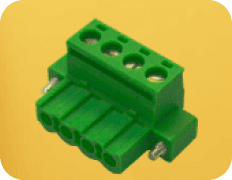
Introduction
India is one of the leading Asian countries in electric vehicle adoption. Currently, the country aims to have 30% of its road vehicles be electric by 2030. Not only is this a step toward a greener future, it is also to address one of the country’s top issues — pollution. India is one of the top polluting countries in the world, by reducing the amount of tailpipe emissions on the roads, it hopes to rectify this problem.
The rate of EV adoption is much slower in industrializing nations like India than in industrialized ones. With less income and supporting infrastructure, people are less likely to invest in electric alternatives. However, with the push from the government as well as public desire to tackle the issue of pollution and climate change, the situation has presented opportunities for the government as well as companies to come up with creative solutions that address the specific needs and circumstances of the country. This would also set an example for other urbanizing Asian economies and pave the way for further EV adoption across the continent.
The challenges of converting to EVs
As cities grow, the number of vehicles on the road increases, leading to more and more roadside pollution. This has become a pressing health concern in India. In 2017, over 1.2 million deaths were attributed to overexposure to pollution. A survey has found that 90% of car owners in India are willing to make the switch to an electric alternative to address this. The same survey also pointed out the need for government initiatives to facilitate the adoption of EVs, including the building of infrastructure as well as financial incentives such as subsidies and reduced road tax.

India’s 2030 goal is ambitious considering EVs currently only make up 1% of road vehicles. The high upfront price of EVs is one of the biggest roadblocks to its adoption, not only in India, but around the world as well. With the country looking to decrease reliance on foreign imports and stimulate local manufacturing, high import duties are in place for EVs, making it near impossible for foreign manufacturers to break into and entice the Indian market. Moreover, the lack of charging facilities is also a huge cause for hesitation, with drivers often concerned about mileage and reliability of EVs.
Creative opportunities

However massive these roadblocks seem, they offer opportunities to develop creative technological solutions to address India’s specific circumstances. Various companies are taking initiatives to tackle the growing pains of the electrification of mobility in the country.
Two and three-wheeled EVs
More than 80% of road vehicles and 95% of EV sales in India are two-wheelers. There has also been a shift to three-wheeled electric rickshaws, with drivers themselves initiating the switch. With smaller batteries, two and three-wheeled vehicles are more affordable than cars. The government is pushing that all new three-wheeled vehicles should be electric by 2023, and by 2025 for two-wheelers. This has offered startups and companies the opportunity to build ecosystems that support and regulate the change. For instance, the start-up SmartE, rents e-rickshaws to drivers, while charging and maintaining the vehicles at their own lots. Given the transportation culture and affordability of smaller vehicles, this is a good beginning to the shift towards a fully electric future.
Locally developed and manufactured batteries
One of the common issues with EVs in India are the batteries. With a much hotter climate than western nations, batteries overheat much more easily, a common issue pointed out by various parties. Moreover, with the government is pushing “Make in India” initiatives in an attempt to encourage local manufacturing, there is opportunity for research and development into batteries that are adapted to the needs and environment of the country, with less competition from foreign manufacturers. In this way, the batteries used in EVs would be much more reliable for the Indian climate and remove some hesitation towards adopting battery-powered vehicles
Shared mobility solutions
Studies have shown that there is a shift towards shared mobility services in India, away from typical car-buying habits, especially among the younger generation. This has pushed motor companies to invest in shared-mobility solutions. India is poised to be a leader in this type of shared-economy, especially in mobility. With the government pushing companies like Uber and Ola to make 40% of their fleets electric by 2026, electrification in shared-mobility is one key frontier in India’s journey to clean roads.
Battery swapping
Battery swapping is seen as a less disruptive solution for charging EVs, addressing the issue of the lack of space for charging facilities where vehicles can park and charge when needed. It also address concerns over the time it takes to charge EV batteries. For instance, Ola has 14 battery swapping stations where e-rickshaw drivers can swap batteries, making the process as fast as refueling at a petrol station.

Conclusion
India’s ambitious plans for electrification have opened up and encouraged a wide range of opportunities for technological innovation and creative problem solving. The country’s specific transportation culture and environment makes this process of electrification very different from that of the West, with two and three-wheelers and shared-mobility rather than private cars leading the way. It has allowed the beginning of an ecosystem of cooperation between companies, startups, and the government to support and facilitate electrification. With these business models, this could set an example for other Asian countries in similar situations, exhibiting the potential of the EV industry.
Learn more about the battery test solutions provided by Arbin for both cell and pack development.
Arbin Instruments has a large sales and service network across India partnering with Metrohm India Private Liminted to serve our clients in the region.






